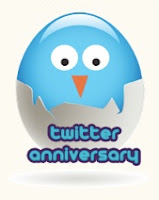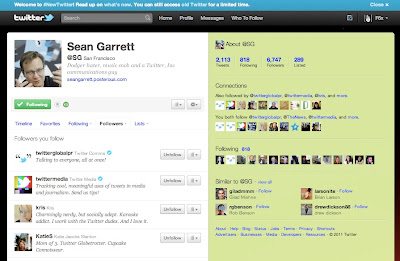 |
| Kenneth Cole reaction. |
Previous posts have focused on how people handle mistakes on Twitter.
There are
plenty of
other posts about just one recent
NPR incident. But what happens when your mistake is that of poor taste? Thanks to
Kenneth Cole, now we know.
Earlier today, the Kenneth Cole account—featuring updates from both the brand and the man—sent out an unseemly Tweet, seemingly trying to turn the chaos in Egypt into consumption of their new collection.
 |
| Consuming chaos. |
And then the Internet went crazy. And rightly so. But before we go too far, I want to point out that unlike some other corporate accounts, this post was populated by the man behind the brand. Sure he has a staff which sends updates on the company’s behalf, but as noted on the account’s page, Mr. Cole does some of the Tweeting himself. When your name is your brand, you run the risk of saying—or doing—something stupid, hurting both.
“Thoughts that end in -KC are from me personally; others are behind the seams insights from my inspiring associates.”
Kenneth Cole- Twitter, 05 October 2009
As any “
Communications Consultant” worth their salt will tell you, it’s what you do after a mistake that matters. In Mr. Cole’s case, he sent out an
equivocating update. Then, presumably upon additional reflection, he
sent an apology pointing to a
Facebook explanation. And then, he
deleted the offending Tweet. Let me repeat that: he deleted the offending Tweet!
Twitter’s importance in the events in Egypt, and many of the recent ”Twitter Revolutions” is—and will be—argued for a while once stability is secured. But the one thing that is not debatable right now is that because of our non-stop monitoring of these events,
Twitter is being watched. And watched closely.
As an attention-getter, yes, sending an update referencing
Egypt will make waves. But mentioning Egypt solely to sell products is a marketing misstep that a
huge number of people will notice. And discuss. Deleting the Tweet isn’t going to eliminate that conversation. It just makes people look further into what caused the ruckus in the first place. And when people can’t find the source, they
look elsewhere for an explanation. And then controlling the narrative disappears.
 |
| Controlling Cole. |
People make mistakes. We all have. It’s how we handle them which illustrates whether or not people will be able to trust us in the future. By deleting the initial update, Mr. Cole—and his brand—create an air of untrustworthiness, essentially saying, “When we make mistakes, we’re going to try and hide them.” The ensuing
Facebook discussion is an attempt at transparency, but it’s really just window dressing. If Mr. Cole wanted to take full responsibility for his error, he would leave it up for Web searches to find, and engage in an effort to explain his thinking, apologize for the offense, and make overtures to make amends. As this is only a few hours old, there’s still time to recover, but it’s going to take a lot more than an apology on a Facebook page. Especially since we’re still watching Egypt so closely. On Twitter.
We’ll see what steps Kenneth Cole takes towards mollification in the next days and weeks. Until then, we have
more important ideas to discuss. I’m almost ashamed at wasting this many pixels on Mr. Cole’s faux pas instead of pointing you toward
coverage of obviously more important topics. My advice to the Kenneth Cole brand is to try regaining the narrative by making some grand gesture to Egyptians everywhere. If they do, we may hear about it on Twitter, on the ‘morrow, on the Web.










































